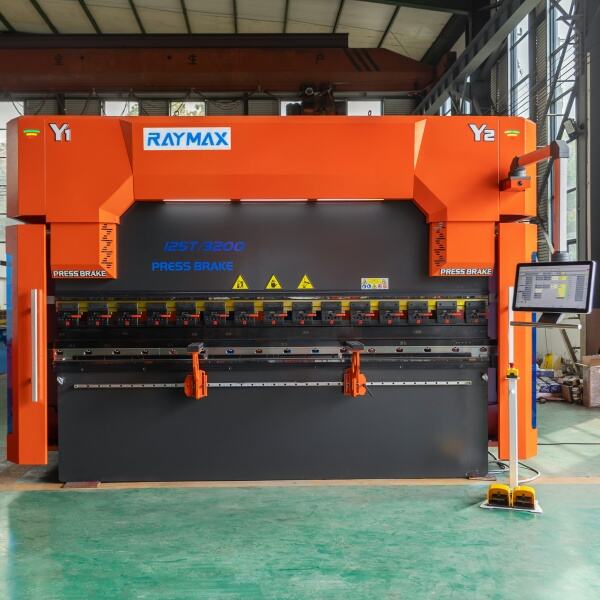How Hydraulic Press Brakes Are Transforming the Metalworking Industry
Introduction to Hydraulic Press Brakes
Definition of Hydraulic Press Brakes
In metalworking shops across the country, hydraulic press brakes stand out as essential tools for bending and forming sheet metal into all sorts of parts. These machines rely on hydraulic power to let manufacturers produce intricate shapes with pretty impressive accuracy and speed. At their core, hydraulic systems inside these presses consist of pumps, valves, and cylinders working together to amplify force against whatever material needs bending. This setup allows for precise control over how metal gets shaped during manufacturing processes, making them indispensable in industries where exact measurements matter most.
Historical Evolution in Metalworking
The world of hydraulic press brakes has changed quite a bit since their early days. Back in the day, these machines were basically just big mechanical contraptions that required workers to apply physical force manually. But as manufacturing grew more complex, folks started realizing the shortcomings of those old mechanical systems. That's when companies began shifting toward hydraulic technology for better control and consistency. Now hydraulic press brakes are everywhere across different industries from automotive shops to metal fabrication plants. They really boost production rates while cutting down on expenses because they require less maintenance compared to their older counterparts. Many manufacturers report saving thousands annually simply by upgrading to modern hydraulic models.
Importance in Modern Manufacturing
In modern manufacturing, hydraulic press brakes play a key role in shaping metal in diverse applications, covering sectors from automotive to aerospace. Their ability to handle a wide range of materials, versatility in producing various shapes, and energy-efficient operations heighten their significance in contemporary manufacturing processes.
How Hydraulic Press Brakes Work
Key Components of Hydraulic Press Brakes
A hydraulic press brake comprises several critical components:
- Hydraulic System: This includes pumps, valves, and cylinders that control the pressure for bending operations.
- Ram: The moving part that applies force on the metal sheet through the use of precision dies.
- Dies: Specialized tools designed to achieve specific bending shapes and angles.
- Control Panel: Where operators can set parameters for the bending process, ensuring high precision.
Operating Principles and Mechanisms
Hydraulic press brakes work based on something called Pascal's Law. Basically, this means when pressure hits a trapped fluid, it gets passed around everywhere without losing strength. Once the operator starts things up, the hydraulic fluid inside gets pressurized, pushing down the ram so it can bend metal into whatever shape needs making. Most modern machines come equipped with control systems these days too. These let operators tweak how far down the ram goes and how fast it moves during operation. Getting these settings right makes all the difference between good parts and ones that need fixing later on.
Bending Process Explained
Sheet metal gets positioned between the ram and die at the start of the bending operation. When the hydraulic system applies pressure, the metal starts to deform in a controlled way. The process lets manufacturers create complex shapes that would otherwise be impossible to achieve manually. Most modern machines have digital control panels where operators adjust angle settings and depth measurements according to job requirements. Some shops even keep detailed records of these parameters for repeat orders, which saves time when producing similar parts again later on.
Advantages of Using Hydraulic Press Brakes
Precision and Accuracy in Bending
Hydraulic press brakes offer something really important: precision work. The way these machines operate gives operators much better control during the bending process, so they can get those consistent, accurate angles time after time. What's interesting is how they handle side-to-side movement when there's an uneven load distribution. This actually helps produce better quality bends that meet even the toughest industry requirements. Many shops have found this makes a big difference in their production outcomes.
Versatility Across Different Materials
Hydraulic press brakes are compatible with an extensive range of materialsâbe it aluminum, steel, or alloysâensuring they meet various manufacturing requirements. This adaptability enables businesses to handle diverse projects efficiently, which is especially vital in custom fabrication.
Energy Efficiency and Cost-Effectiveness
Compared to conventional mechanical systems, hydraulic press brakes are generally more energy-efficient, operating only when necessary, which decreases overall energy consumption. The precision offered also leads to reduced material waste, enhancing cost-effectiveness in manufacturing processes.
Applications of Hydraulic Press Brakes in Various Industries
Utilization in the Automotive Industry
In the automotive sector, hydraulic press brakes prove essential for fabricating complex body panels and structural components. Their ability to manipulate sheet metal accurately allows for the creation of customized parts, which are paramount to meeting the evolving demands for quality and innovation in car manufacturing.
Role in Aerospace Manufacturing
The aerospace industry relies on hydraulic press brakes for producing intricate components that require exceptional accuracy and high structural integrity. Given the stringent standards in aerospace, the consistent performance of hydraulic press brakes assures manufacturers achieve the needed compliance and quality assurance.
Applications in Construction and Infrastructure
Hydraulic press brakes also find significant use in the construction sector, where they contribute to shaping steel beams and other structural elements. Their application ensures that manufacturers meet safety and robustness requirements, crucial for construction projects.
Future Trends and Innovations in Hydraulic Press Brakes
Integration with Industry 4.0 Technologies
As the manufacturing landscape shifts towards Industry 4.0, hydraulic press brakes are integrating with smarter technologies. This includes connectivity with data analytics systems that can provide predictive maintenance solutions, enhancing machine longevity and reducing unexpected downtimes.
Advancements in Automation and Robotics
The future of hydraulic press brakes incorporates automation and robotics. Collaborative robots (cobots) can work alongside operators, increasing efficiency and reducing human error during the bending processes. Automation will allow fabricators to run operations smoothly with minimal manual intervention.
Emerging Technologies and Smart Manufacturing
Emerging technologies like artificial intelligence are also expected to revolutionize hydraulic press brakes. Smart manufacturing solutions enabled by AI can optimize production schedules and enhance quality control through real-time process monitoring. As fab shops adopt these innovations, we anticipate even greater levels of efficiency and precision in metalworking operations.
Conclusion
Looking back, hydraulic press brakes have changed the game for metalworking shops everywhere. These machines keep getting better too, with new tech being added all the time. They're still going to be important players in manufacturing going forward, helping shops produce parts faster and with much better accuracy than before. The automotive sector especially relies on them for those complicated sheet metal jobs. For companies thinking ahead, investing in good quality hydraulic press brakes probably means staying competitive in this fast moving market place. Those early adopters tend to see real benefits down the road when it comes to both product quality and bottom line savings.



